Fish
Fur-bearing Trout
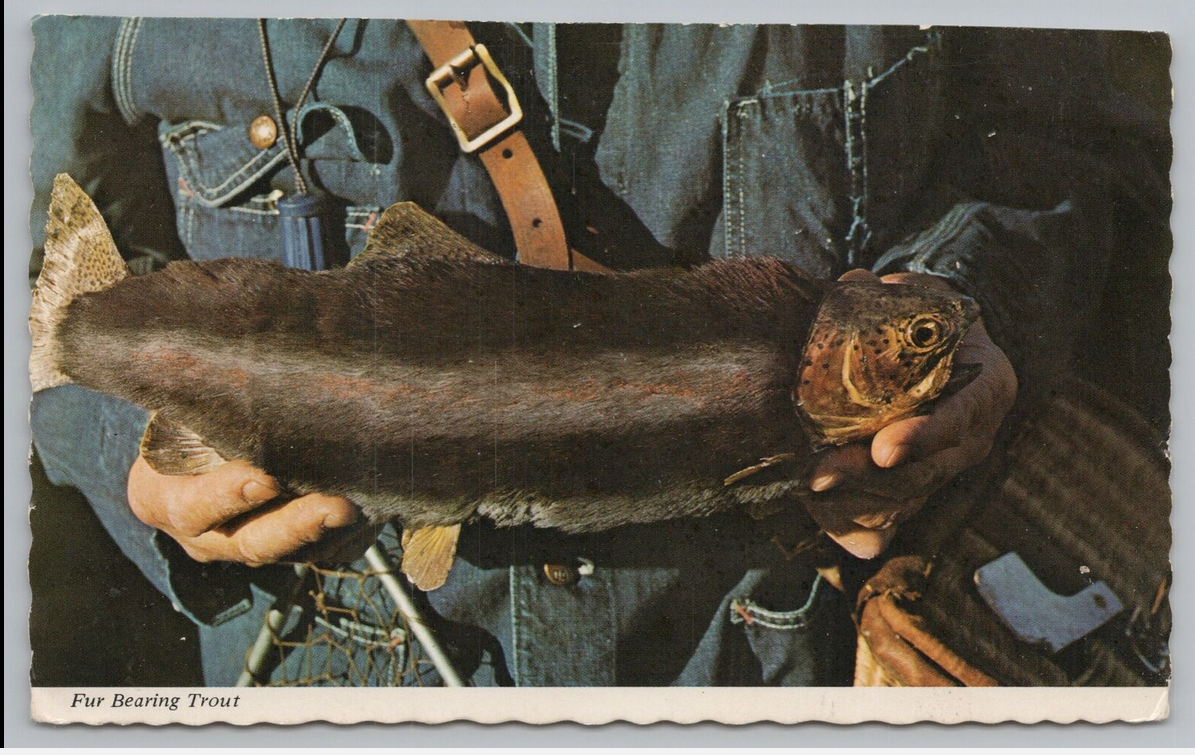
In 1935, a newspaper article revealed the supposed existence of "fur-bearing trout."
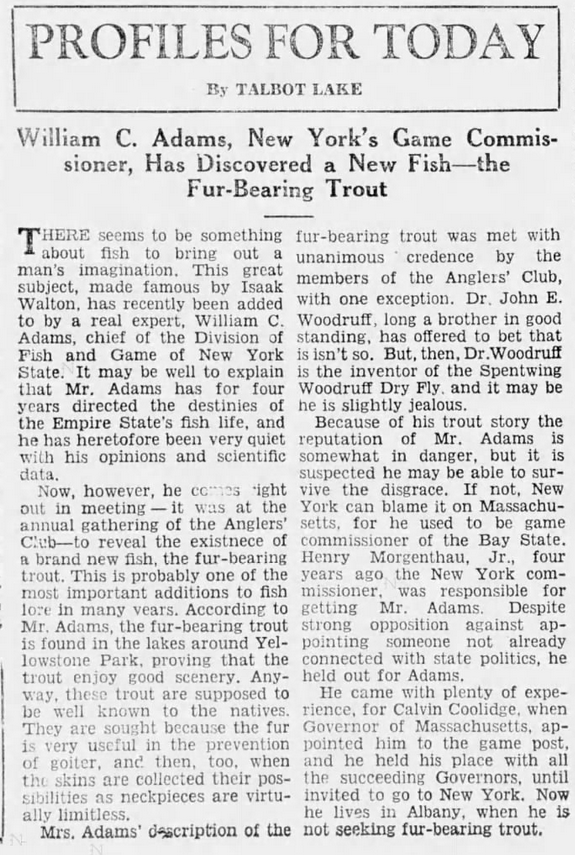
Article source: Napa Journal (Napa, California) 17 Feb 1935, Sun Page 4
Then humorist Robert Benchley wrote a piece on it.
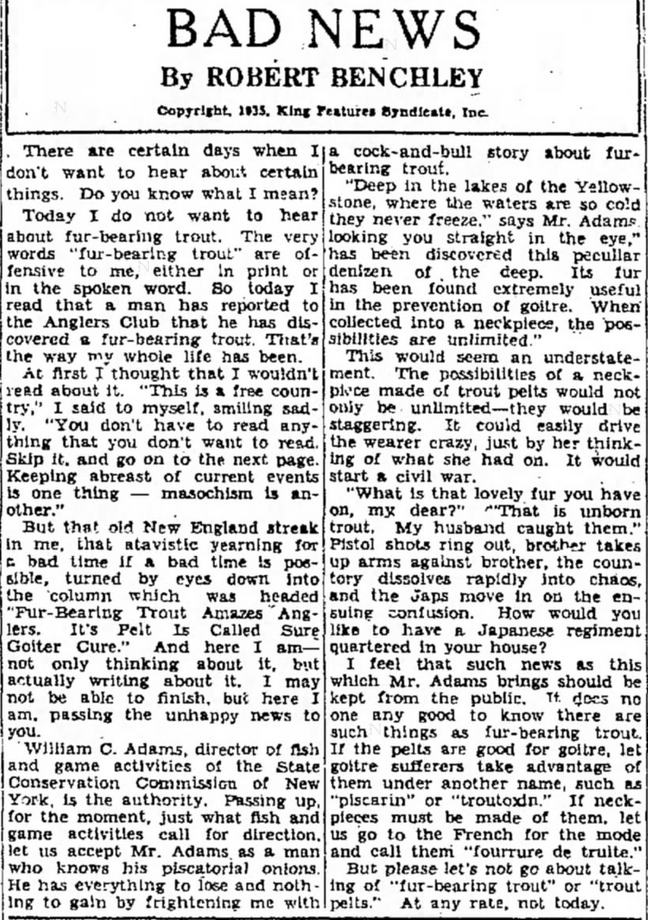
Article source: Cumberland Evening Times (Cumberland, Maryland) 23 Feb 1935, Sat Page 3
Since then, the legend continues to resurface, down to the present day.
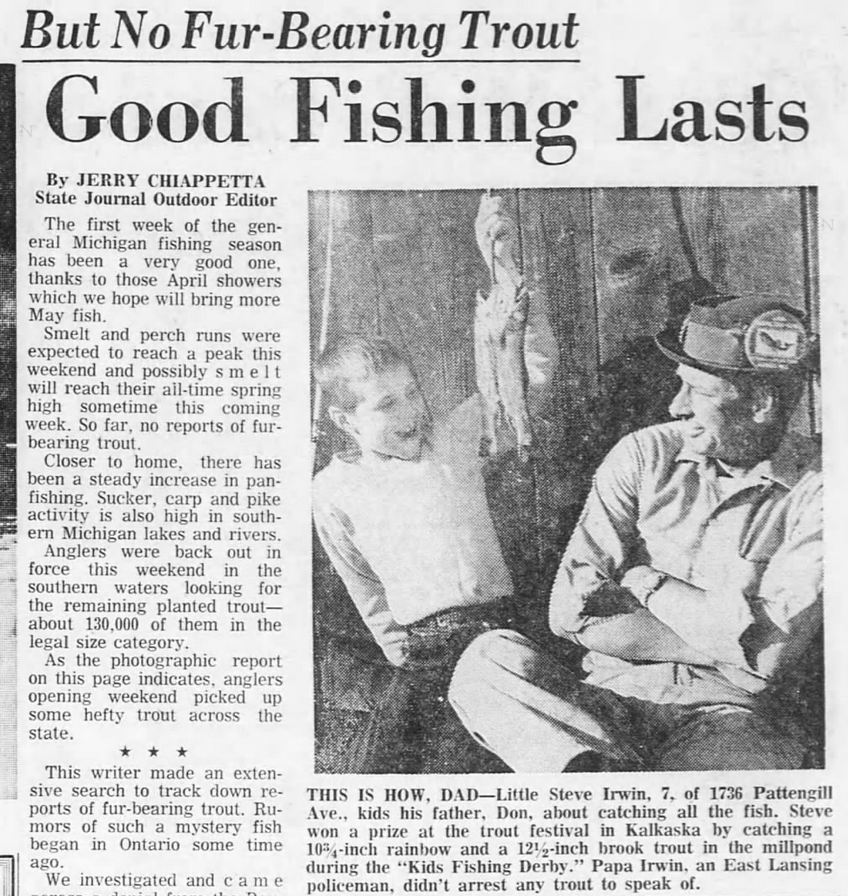
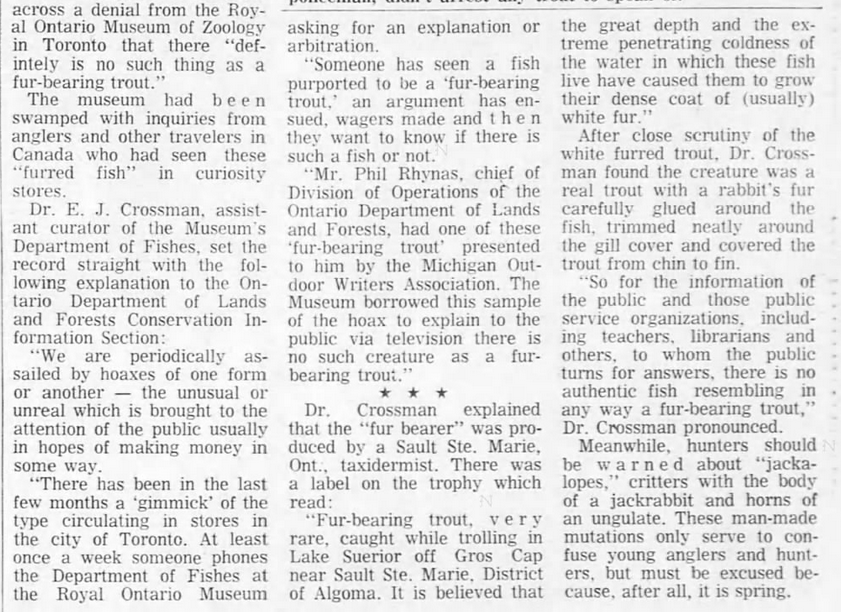
Article source: Lansing State Journal (Lansing, Michigan) 03 May 1964, Sun Page 70
Posted By: Paul - Thu Aug 18, 2022 -
Comments (1)
Category: Cryptozoology, Hoaxes and Imposters and Imitators, Lakes, Ponds, Rivers, Streams, Swamps and Other Bodies of Fresh Water, Fish, 1930s, North America
The woman who kissed her goldfish
Mrs. George Wolfe must have been horrified by the goldfish-swallowing fad.
Waterloo Courier - Mar 5, 1944

Des Moines Tribune - Feb 21, 1944
Posted By: Alex - Wed Jul 27, 2022 -
Comments (2)
Category: Fish, 1940s
Fish-Operated Vehicle
Scientists at Israel's Ben-Gurion University of the Negev trained goldfish to drive a "fish-operated vehicle" or FOV. Details from scmp.com:So how long before your Uber driver is a fish?
More info: "From fish out of water to new insights on navigation mechanisms in animals"
Posted By: Alex - Thu Jan 13, 2022 -
Comments (3)
Category: Motor Vehicles, Experiments, Fish
Queen Mermaids of the Flin Flon Trout Festival
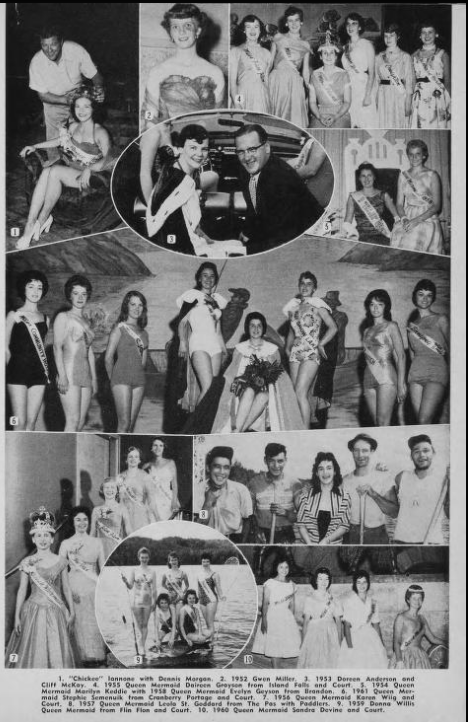

Source
Posted By: Paul - Thu Jul 15, 2021 -
Comments (8)
Category: Awards, Prizes, Competitions and Contests, Beauty, Ugliness and Other Aesthetic Issues, Regionalism, Fish, 1960s
The Talking Fish Lure
Ads for the "Talking Fish Lure" began to appear in papers in 1959. They promised that, thanks to this new talking lure, fishermen would be guaranteed to catch fish:
The Vancouver Province - May 30, 1959

Eight years later, the promoter of the lure was indicted on 60 counts of mail fraud. From the New York Daily News (May 12, 1967):
Named in the indictment was Monroe Caine, 38, of 222 Daisy Farms Drive, Scarsdale, described as an advertising man and mail order promoter whose ads for a "remarkable European talking fish lure" ran July 19, 1964, in newspapers across the country.
The jurors, who were shown the ads, found the whole thing somewhat fishy, especially after being told that fishermen who sent in $1.98 or $2.49 for the lure got either a worthless gadget or nothing in return.
Posted By: Alex - Wed Jun 16, 2021 -
Comments (0)
Category: Frauds, Cons and Scams, Sports, Fish, 1950s, 1960s
Octopus found in Restroom
The Equinox Bar, on the 22nd floor of the Hyatt-Regency, was the only revolving restaurant/bar in San Francisco, until it closed in 2007.In April 1978, a large octopus was found in the women's restroom of the bar. I haven't found any follow-ups to this story explaining why someone left an octopus there.
So the incident remains a mystery, just like the porpoise found in the men's restroom of Glasgow Central Station in 1965.

Napa Valley Register - Apr 22, 1978
Posted By: Alex - Wed May 12, 2021 -
Comments (4)
Category: Bathrooms, Fish, 1970s
Uke-TEL NAKI-U1
"Uke-TEL NAKI-U1" is the 1993 creation of the 'art collective' Maywa Denki (brothers Masamichi and Nobumichi Tosa), who specialize in creating "useless machines". They offer the following description of 'Uke-TEL' on their website:Or, as explained by We Make Money Not Art:

Seems to me its use is to kill goldfish, which makes it relevant to the controversy, previously posted about, concerning the legal rights of goldfish.
Posted By: Alex - Tue Mar 30, 2021 -
Comments (0)
Category: Art, Fish, 1990s
Organoleptic analysis
Odd job: the FDA employs people to smell fish in order to determine if it's decomposed. They refer to this as "organoleptic analysis"."The next is number two. That means slight decomposition. Whether the fish is all right depends on the product. The criteria are based on percentages. And last is number three, the really bad ones. Definitely decomposed. Number three is so putrid and stinky you wouldn't want to eat it."
The article I'm getting the info from was published in 1978, but I'm assuming the FDA must still employ people to smell fish. Unless they've got a fancy gadget to do it now.


Detroit Free Press - Jul 18, 1978
Posted By: Alex - Tue Nov 24, 2020 -
Comments (1)
Category: Jobs and Occupations, Fish, Smells and Odors
What rights do goldfish have?
1978: The final act of a British play titled The Last Temptation involved a goldfish bowl, with a live goldfish inside, being thrown across the stage, causing the fish to tumble onto the ground, where it died. Outraged animal lovers sued, prompting a two-year legal battle in which the courts deliberated on whether it was possible to be cruel to goldfish. Or rather, should goldfish enjoy the protections given to other animals such as cats and dogs?The first court ruled that goldfish enjoyed no such protections, but in 1980 the High Court overturned this decision, ruling that it is, indeed, possible to be cruel to goldfish, and that the law should not allow such behavior.
I'm not sure if there's any equivalent American law pertaining to goldfish. But I imagine that if there was then surely boiling lobsters alive would also be illegal.
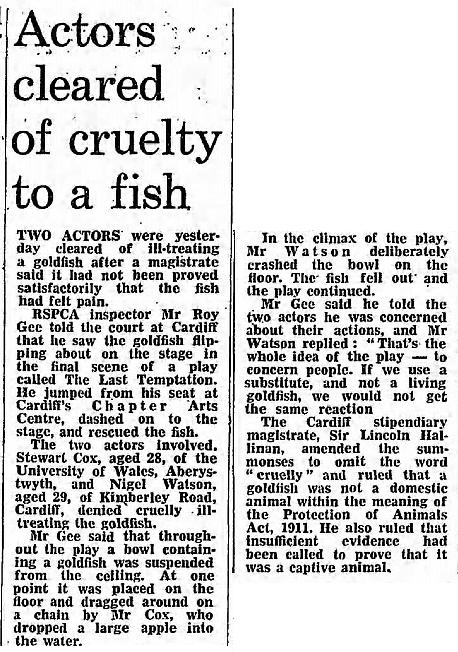
The Guardian - Nov 3, 1978
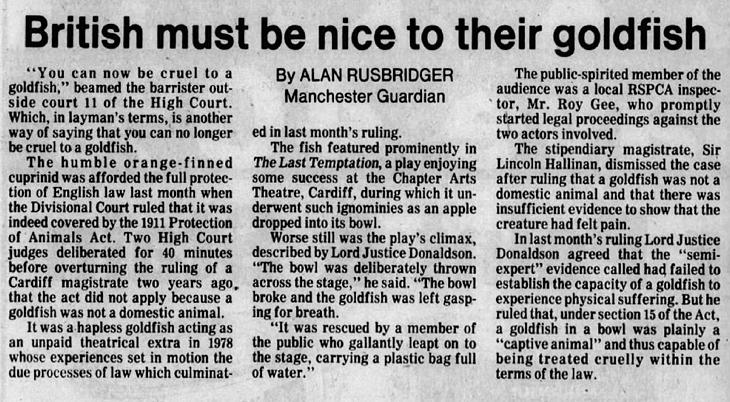
Victoria Times Colonist - July 30, 1980
Posted By: Alex - Thu Aug 20, 2020 -
Comments (3)
Category: Law, Fish, 1970s
Porpoise in toilet
I've heard of alligators in the sewer, but not porpoises in toilets.I haven't been able to find out if there was ever a solution to the mystery of how a porpoise came to be in the toilet of the Glasgow train station. I'm assuming student pranksters were probably involved.

Ottawa Journal - Dec 7, 1965
Posted By: Alex - Mon Jul 27, 2020 -
Comments (3)
Category: Animals, Fish, Bathrooms, 1960s

| Who We Are |
|---|
| Alex Boese Alex is the creator and curator of the Museum of Hoaxes. He's also the author of various weird, non-fiction, science-themed books such as Elephants on Acid and Psychedelic Apes. Paul Di Filippo Paul has been paid to put weird ideas into fictional form for over thirty years, in his career as a noted science fiction writer. He has recently begun blogging on many curious topics with three fellow writers at The Inferior 4+1. Contact Us |




